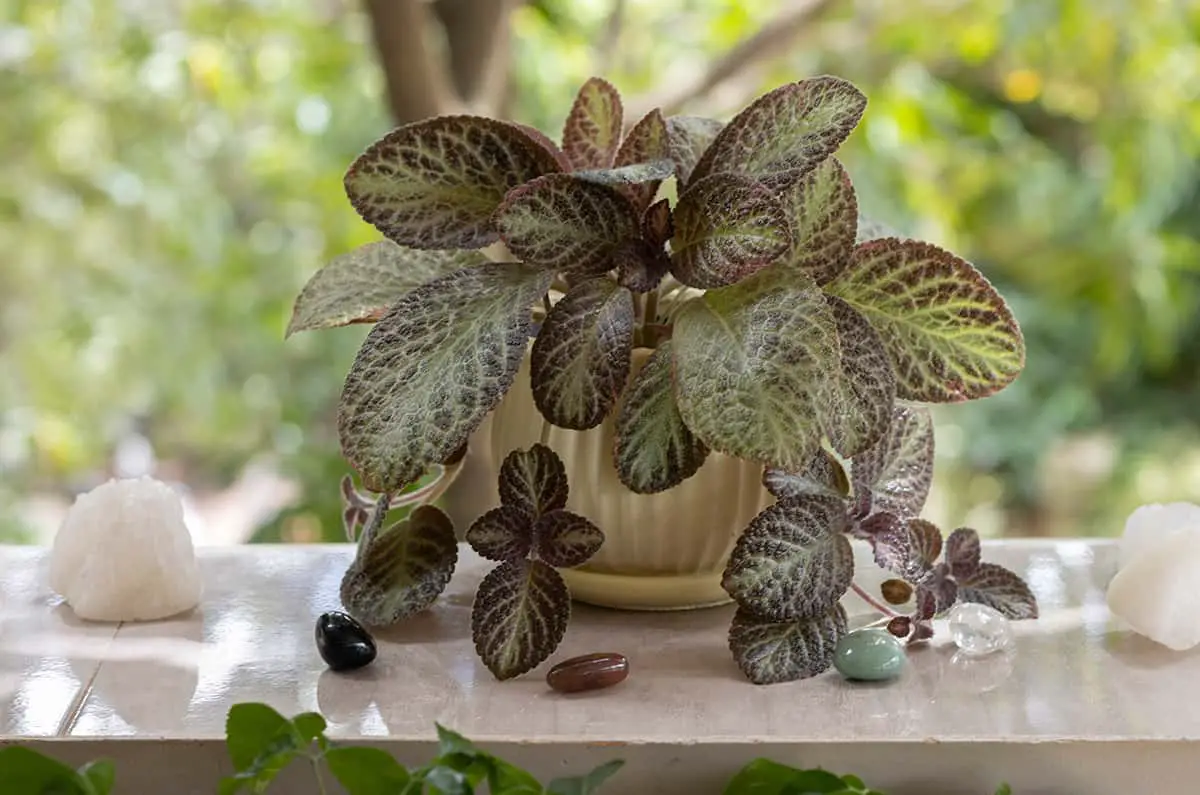As you settle into your cozy, low-light living room, you might find yourself wishing for a pop of color to liven up the space. Flame violets, with their vibrant foliage, are a perfect choice. These plants are not only beautiful but also thrive in indirect sunlight, making them ideal for spots away from windows. With a few simple care techniques, you can keep them flourishing, adding a burst of life to any corner of your home.
| Common Name | Flame Violet |
| Botanical Name | Episcia cupreata |
| Family | Gesneriaceae |
| History & Origin | Native to Central and South America |
| Plant Type | Evergreen perennial |
| Mature Size | Up to 6 inches tall, 12 inches wide |
| Sun Exposure | Bright, indirect light |
| Soil Type | Well-draining, rich, loamy |
| Soil pH | Slightly acidic to neutral (6.1 to 7.3) |
| Temperature | Prefers 65-75°F (18-24°C) |
| Watering | Keep evenly moist, not waterlogged |
| Fertilizing | Feed bi-weekly during growing season |
| Bloom Time | Spring to summer |
| Flower Color | Red, pink, orange, yellow |
| Hardiness Zone | Typically indoors; zone 11 outdoors |
| Toxicity | Non-toxic to humans and pets |
| Common Problems | Overwatering, low humidity, spider mites |
Table of Contents
Light
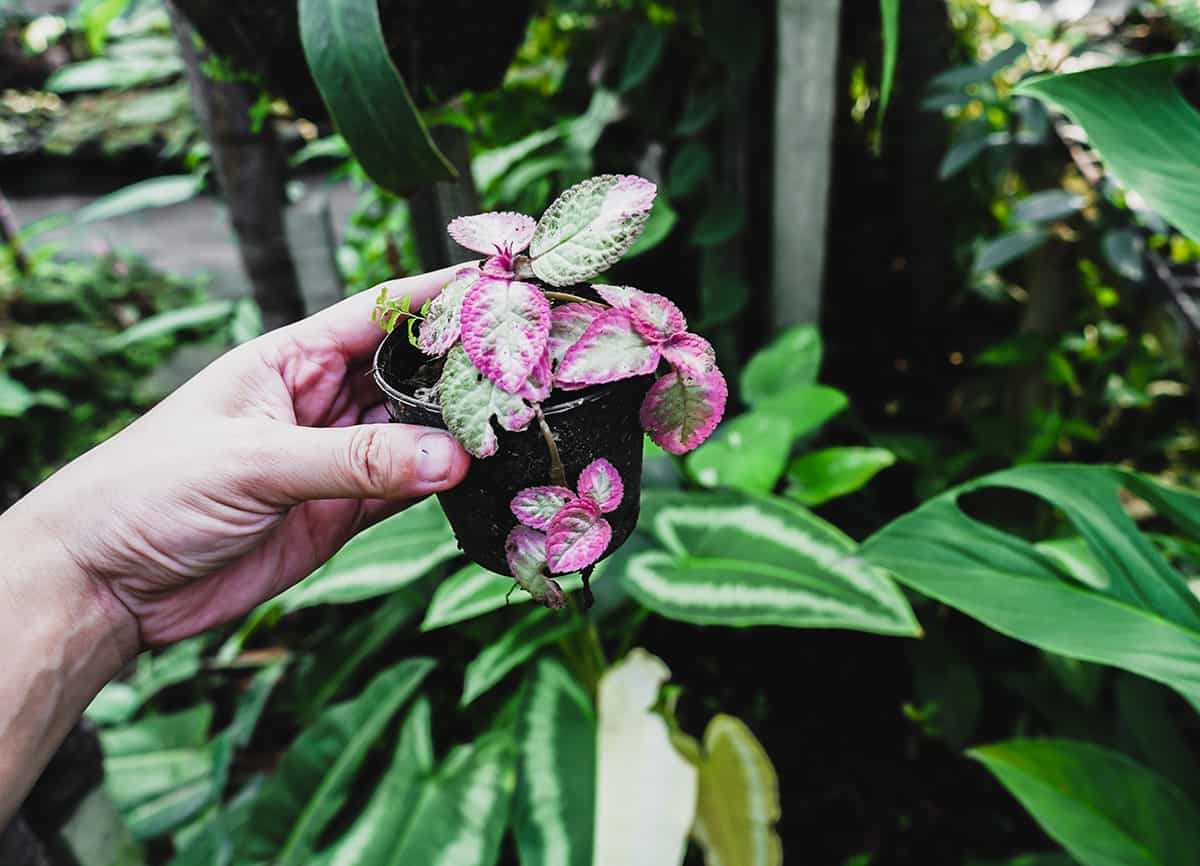
Flame violets, also known as Episcia cupreata, thrive in bright, indirect sunlight. Position your plant near a window with filtered light or provide artificial lighting. But, avoid direct sunlight, as it can scorch the leaves and cause damage.
To ensure consistent growth, you can use a grow light. It imitates natural light and helps in maintaining healthy plant development.
Keep an eye on your flame violet’s leaves for any signs of stress. If the leaves appear pale or leggy, the plant may need more light. On the other hand, if the leaves are scorched or brown, it may be getting too much direct sunlight, and you should move it to a shadier spot.
Finally, maintain a consistent light schedule. Flame violets generally require about 12 to 16 hours of light per day for optimal growth and flowering. So, monitor the light exposure your plant receives and adjust it accordingly to maintain its health and vibrancy.
Soil

Flame violets, like their African violet relatives, require well-drained potting soil to thrive. A mixture of equal parts peat moss, vermiculite, and perlite works well for providing both proper drainage and sufficient nutrients. Some gardeners also add a small amount of horticultural charcoal for improved air circulation in the soil.
To ensure your flame violets receive adequate moisture, always use a high-quality moisture-retentive soil mix. You don’t want the roots to sit in soggy soil, as this can lead to root rot and other problems. Be careful not to overwater your plants, and allow the soil to dry out slightly between watering sessions. Flame violets are sensitive to water quality, so it’s best to water them with distilled or filtered water whenever possible.
Fertilizing is an integral part of keeping your flame violets healthy and blooming. Use a balanced, water-soluble fertilizer designed for African violets diluted to half strength. Fertilize your plants about once a month during their growing season, which typically spans from spring to fall.
Water
These tropical plants prefer moist soil, but overwatering can lead to root rot and other problems. To find the perfect balance, water your flame violet when the top layer of soil feels dry to the touch.
Use room temperature water, as cold water can shock the plant. When watering, avoid getting water on the leaves, as this can cause damage to the delicate foliage. Flame violets particularly dislike water on their leaves due to their high humidity requirements.
To achieve the right humidity levels, consider placing a tray of water with pebbles beneath the flame violet’s pot. Make sure the pot doesn’t sit directly in the water. This technique will create a humid environment for your plant without directly wetting the leaves. Keep in mind that the plant’s need for moisture increases during warmer months, so adjust your watering schedule accordingly.
Temperature and Humidity
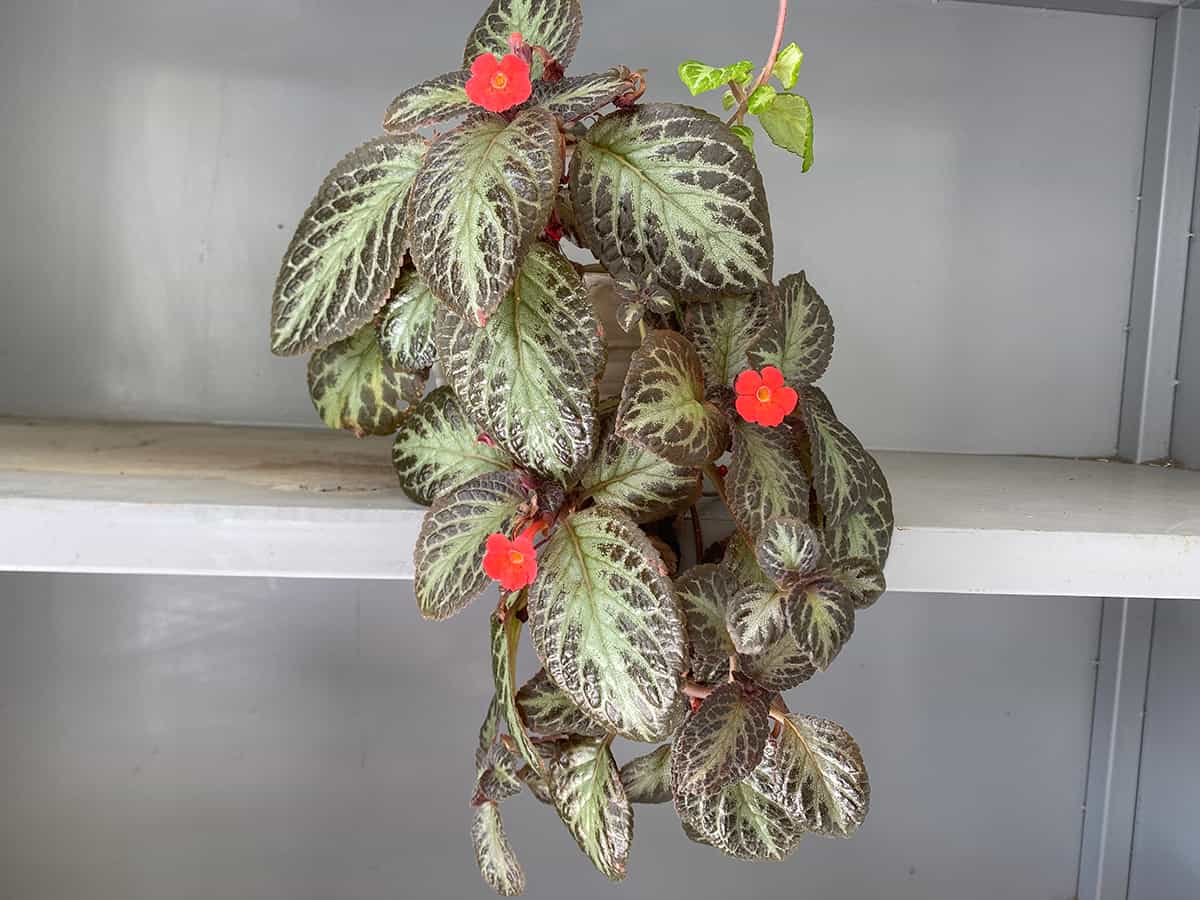
The ideal temperature for growing Flame Violets is between 70-80°F. Your plants will thrive when the relative humidity is above 50 percent. To achieve these conditions, you should regulate your indoor air temperature and maintain proper humidity levels.
Avoid placing your Flame Violets near direct sunlight. They need bright, indirect light to flower well. You can achieve this by putting them on a windowsill with filtered sunlight or in bright rooms with some shade. The same lighting conditions suitable for African Violets work for Flame Violets too.
In order to maintain higher humidity levels, you can place the Flame Violets on a shallow tray filled with gravel and water. The water will evaporate, naturally increasing the humidity around the plant. Be careful not to let the pot sit in the water directly, as this might lead to root rot. Alternatively, a home humidifier can be used to increase the humidity levels of the plants.
Fertilizer
Use a balanced, high-quality, water-soluble fertilizer that’s diluted to half strength. Apply the fertilizer every four weeks for the best results.
You should be careful not to over-fertilize your flame violets, as too much can lead to problems such as leaf-tip burn or lack of flowering. Monitor your plant’s health, adjust the frequency, or dilution of the fertilizer if necessary. To avoid nutrient buildup in the soil, you can occasionally flush the pot with water to remove any excess salts.
It’s important to apply the fertilizer evenly around the plant. Pour the diluted solution onto the soil rather than directly onto the leaves, as this can cause damage to the plant’s foliage. Make sure the water is room temperature before application, as flame violets are sensitive to extreme temperatures.
Propagation
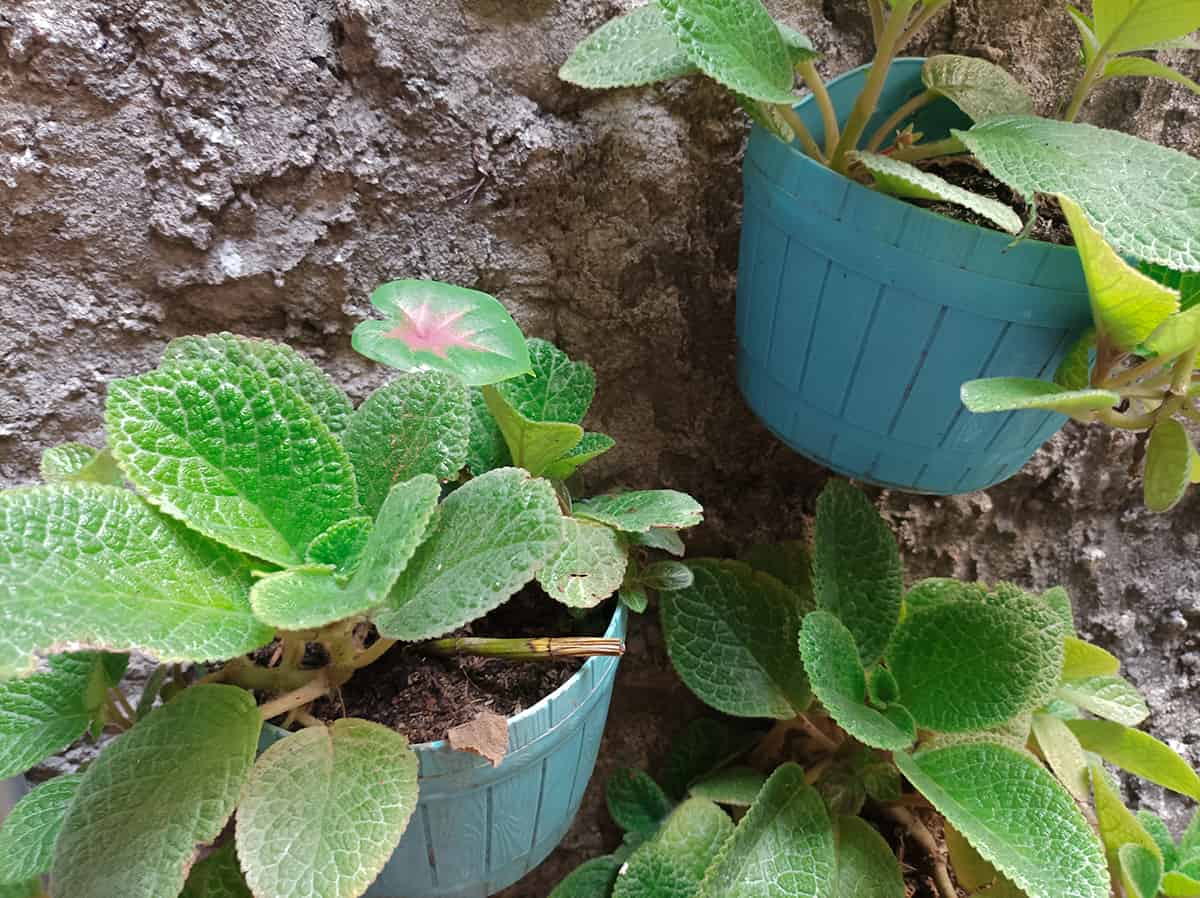
Flame Violets can be propagated in a few ways.
Stem Cuttings
The most common method for propagating Flame Violets is through stem cuttings. First, locate a healthy and vigorous flame violet plant to use as your source. Select a well-developed stem with two or more leaves, and make a clean cut at an angle, leaving at least an inch of the stem on the mother plant. Now, you can insert the cut end of the stem into fresh, moist potting mix. It’s important to keep the soil consistently moist to facilitate root development.
Stolon Propagation
Flame Violets have another unique feature: they produce stolons, which can be used for propagation. This method is called stolon propagation. To begin, locate a healthy plantlet on a stolon with at least four leaves. You should pinch off about half an inch of the runner, then push it into fresh, moist potting mix. As with stem cuttings, consistent moisture is key to rooting success.
By using these propagation techniques, you can effectively grow and care for your Flame Violets. Enjoy the vibrant colors and lush foliage that these beautiful houseplants offer, and share the joy with your friends and family by gifting them with your newly propagated plants.
Pruning
The pruning process for Flame Violets is essential to maintain the plant’s health and visual appeal. To start, ensure that you’re using clean, sharp pruning shears to avoid causing any damage.
First, focus on removing any dead or damaged leaves and stems. This helps prevent the spread of diseases and allows your plant to direct its energy towards new growth. Remember, it’s good to pinpoint the yellowing leaves and broken stems for a healthy Flame Violet.
Don’t hesitate to prune overgrown foliage and leggy stems. By doing this, you maintain the plant’s compact shape, making it more attractive. Aim to cut at an angle just above a leaf joint to encourage branching.
During early spring, consider cutting back vigorous growth from the previous season. This stimulates new growth and helps improve air circulation within the plant. It’s important to give your Flame Violet ample space to flourish.
Lastly, keep an eye on stolon growth. Stolons are the horizontal stems that produce new plantlets. You may want to trim back or remove these stolons to prevent overcrowding or to use them for propagation purposes. This ensures your Flame Violet remains tidy and well-managed.
Potting and Repotting
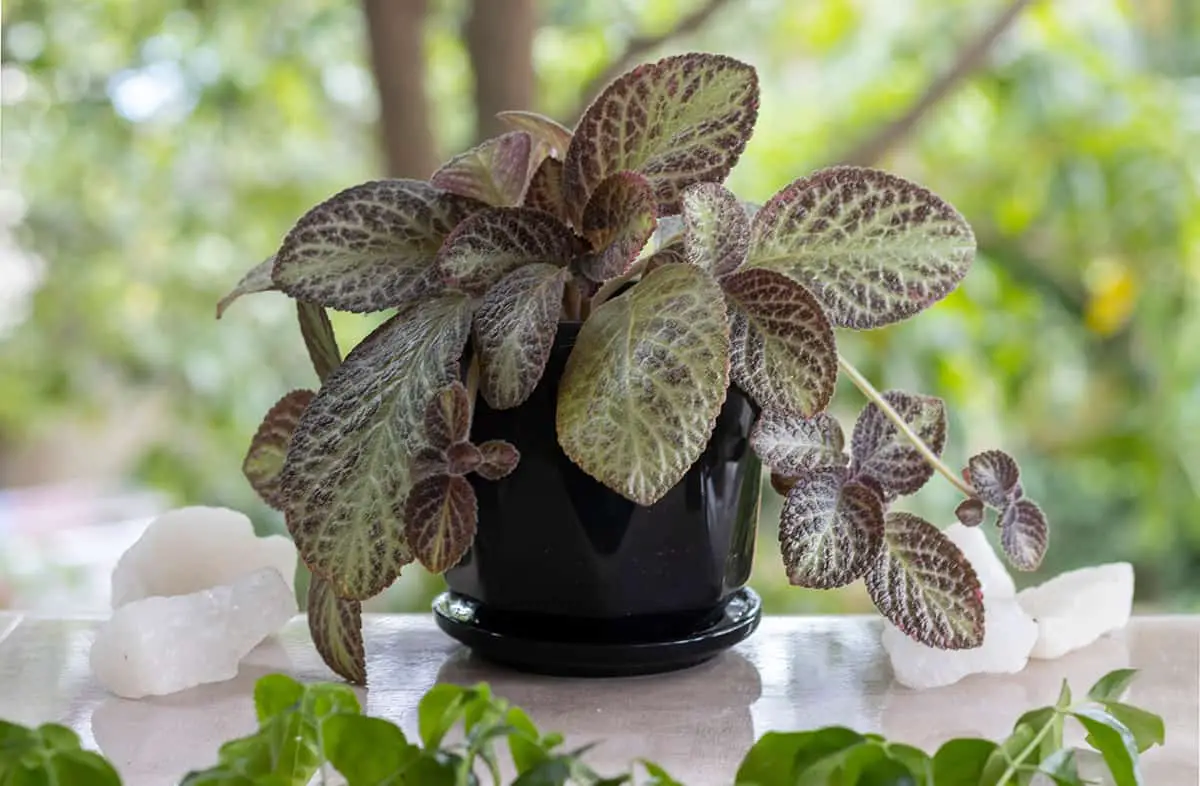
When starting with flame violets (Episcia cupreata), choose pots with good drainage and well-drained potting soil. This ensures that your plants have the best possible conditions for growth. Pots made from glazed ceramic or plastic material are preferable, as they help prevent excess moisture buildup.
Now that you’ve picked the right pots, it’s time to plant your flame violet. Gently remove them from their original container, being careful not to damage their delicate roots. Fill the new pot with a layer of well-draining soil mix. Position your flame violet in the center, adjusting the root ball so that the top of the roots is just below the rim. Fill in around the sides with the remaining soil, gently patting it down to prevent air pockets.
During the plant’s lifetime, it may be necessary to repot them. Often, repotting takes place when the root system becomes crowded or the plant has outgrown its current container. To determine if your flame violet needs repotting, look for signs such as slowed growth, roots emerging from drain holes, or the plant itself looking top-heavy.
Before repotting, make sure to sanitize your tools and pot to avoid infection. Soak the pot in a solution of 1 part vinegar to 3 parts water, then rinse thoroughly. This simple step aids in eliminating any potential pests or diseases. When transitioning your flame violet to a larger pot, repeat the planting process, ensuring the soil mix drains well for optimum growth.
Common Problems & Troubleshooting
The Flame Violet is a versatile, attractive plant, but you may face some challenges when cultivating it. This section will tackle common problems and provide troubleshooting tips to keep your plant thriving.
Sometimes, your Flame Violet may experience drooping leaves. This condition is typically caused by over-watering or under-watering. Observe the moisture level of your plant’s soil; if it feels too dry or too wet, adjust your watering frequency. Allow the soil to dry a little between waterings.
Another issue you may face is the yellowing of leaves. This can occur due to insufficient light or a lack of nutrients. Flame Violets require indirect sunlight to thrive. Make sure your plant is positioned in a well-lit area, but avoid direct sun exposure that could damage the leaves. Additionally, consider incorporating a nutrient-rich potting mix to provide essential nutrients to your plant.
Finally, watch out for pests. Flame Violets can be prone to attacks from insects such as aphids or spider mites. Regularly inspect your plant for signs of infestation, and treat any issues promptly. You can use mild insecticides or consult with a local gardening expert for assistance.
Flame Violet Varieties to Grow
Episcia ‘Cleopatra’
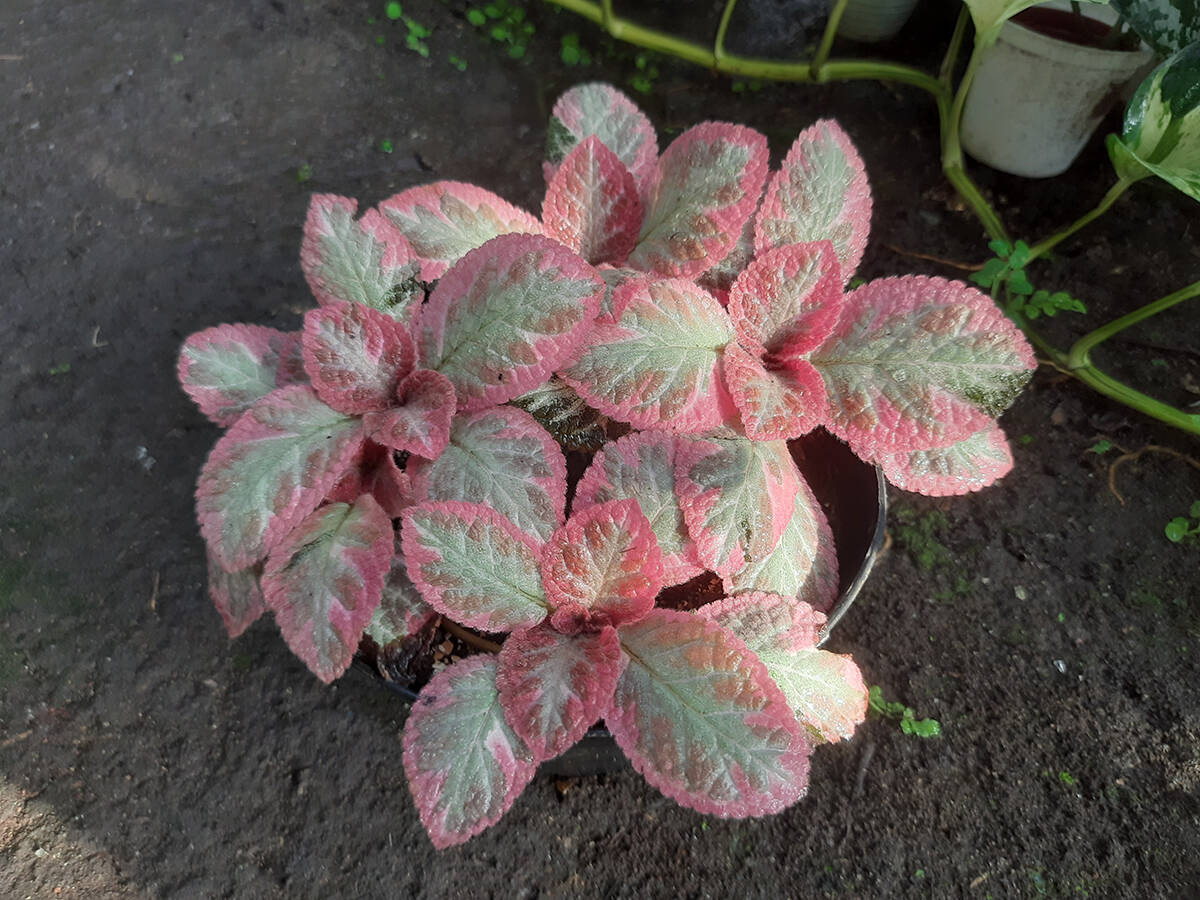
Episcia ‘Cleopatra’ is a stunning variety with bronze-green leaves and silver veining. The plant produces bright red-orange flowers, making it a visually captivating choice for your home or garden.
Episcia ‘Pink Acajou’
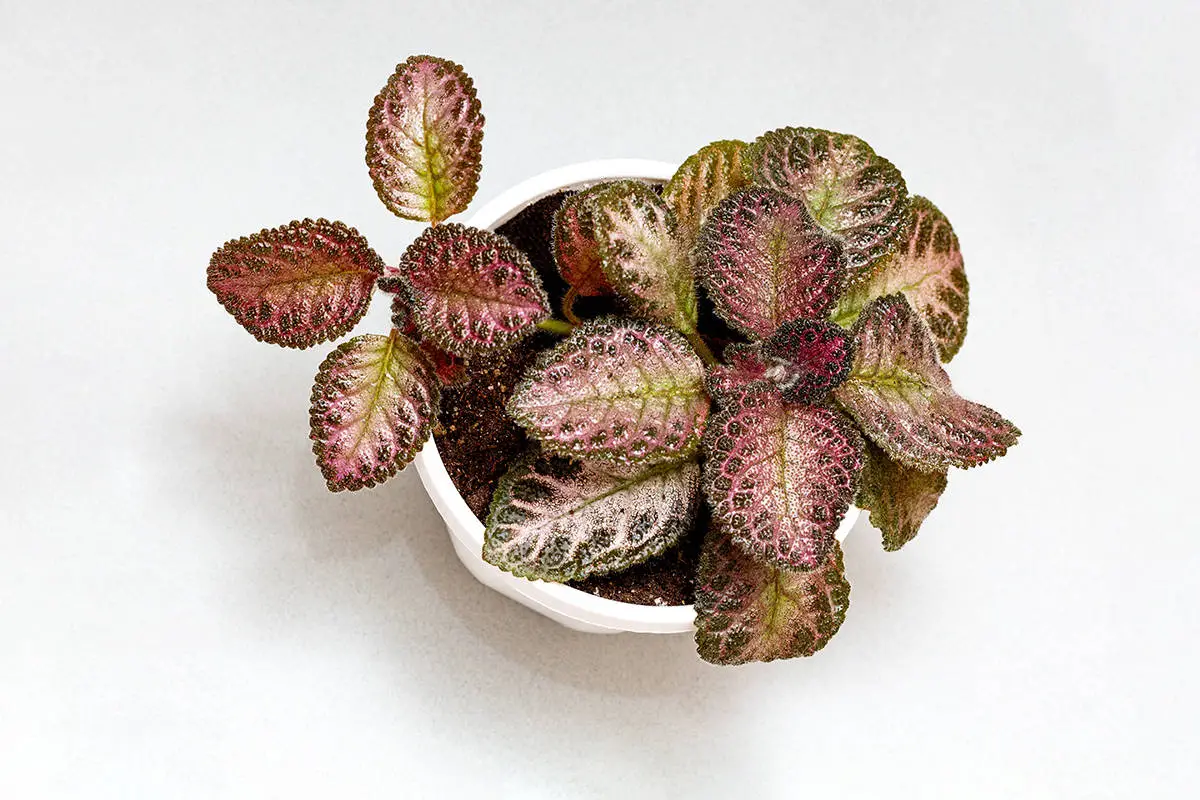
The Episcia ‘Pink Acajou’ features salmon-pink flowers, providing a delicate touch to your collection. Its vibrant green leaves with deep veins create a beautiful contrast against the soft blooms.
Episcia ‘Silver Skies’
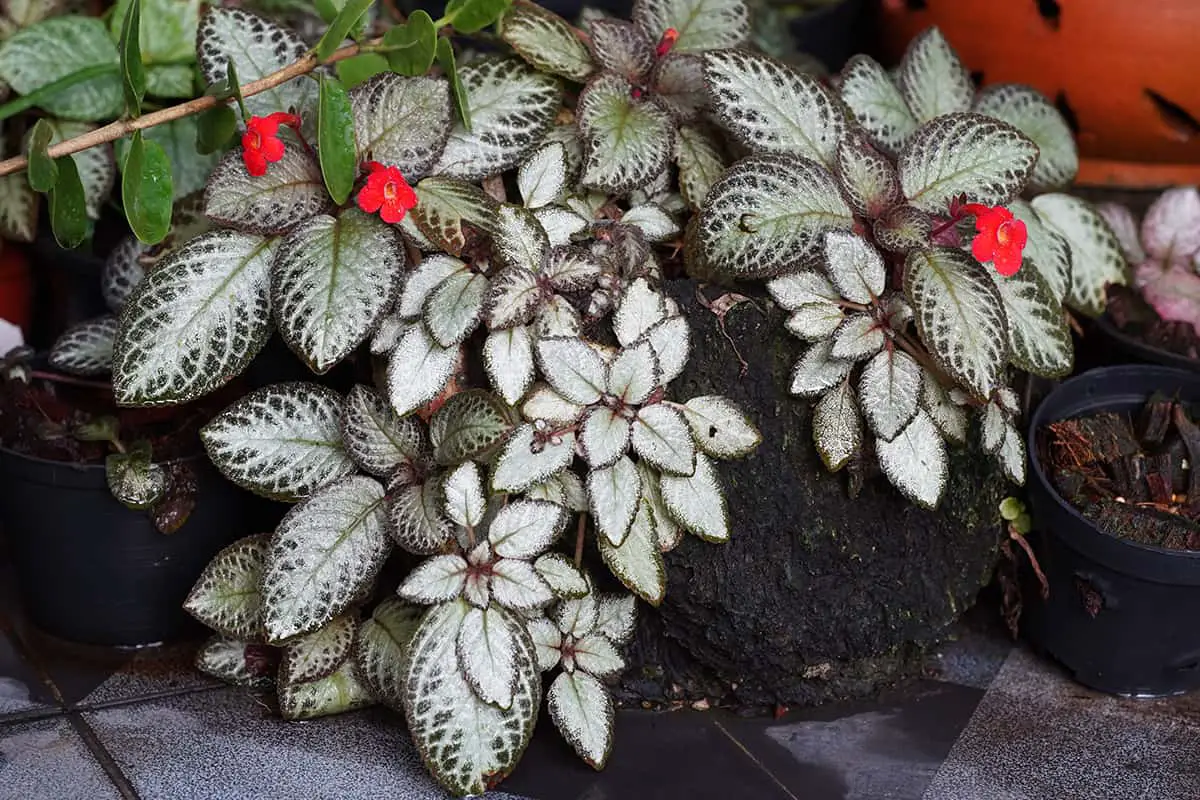
Episcia ‘Silver Skies’ stands out with its silvery-green leaves and intricate veining. This variety bears vibrant red flowers, which make it a stunning addition to any space.
Episcia ‘Cupreata’
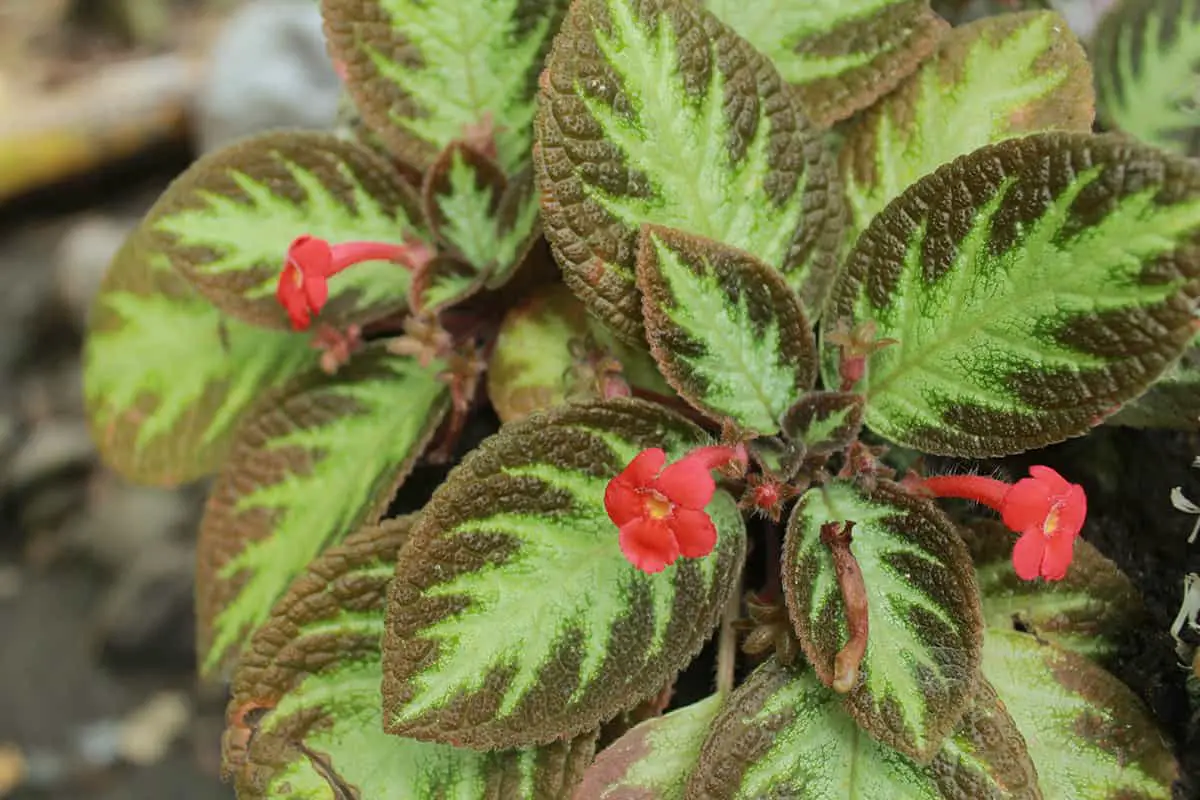
The Episcia ‘Cupreata’ offers a vibrant mix of colors. It has eye-catching leaves that combine coppery shades with green and silver. It produces spectacular red, pink, and orange flowers, giving your space a pop of color.
Episcia ‘Jim’s Hall’s Choice’
Recognized for its unique charm, the Episcia ‘Jim’s Hall’s Choice’ variety boasts variegated pink, green, and white leaves. It produces brilliant orange-red flowers, which add an alluring elegance to your indoor or outdoor garden.
Growing flame violets can be a delightful adventure. Each of these varieties has its distinct features, offering you a diverse selection to choose from. Carefully consider their individual colors and characteristics to find the perfect flame violet for your space.
